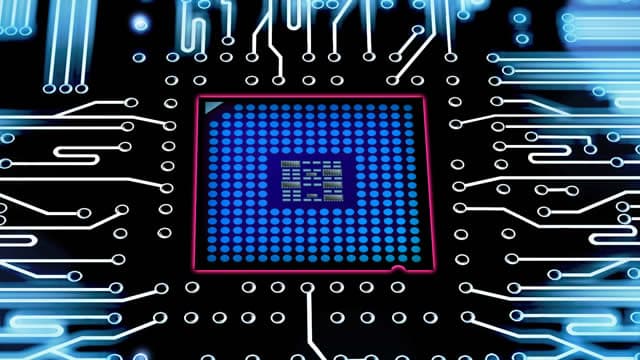Tesla's Elon Musk, Nvidia's Jensen Huang See Eye-To-Eye On This World-Changing Tech

Summary
Tesla's Elon Musk and Nvidia's Jensen Huang both foresee humanoid robots as the next world-changing technology, poised to revolutionize labor, manufacturing, and daily life. Musk's Optimus leverages Tesla's AI expertise, while Huang's Nvidia provides the essential computational backbone. This convergence signals a massive market opportunity for investors in semiconductors, robotics components, AI software, and automation, despite challenges like cost and ethical considerations. The long-term economic impact is expected to be transformative.
Tesla's Elon Musk, Nvidia's Jensen Huang See Eye-To-Eye On This World-Changing Tech
The future isn't just coming — it's marching in on two legs, and tech titans Tesla Inc. (TSLA) CEO Elon Musk and Nvidia Corp. (NVDA) CEO Jensen Huang are making bold predictions about the robotics industry of the future. Both visionary leaders, known for their disruptive innovations in electric vehicles, AI, and semiconductors, are converging on the belief that humanoid robots will soon become a ubiquitous and transformative force in society, fundamentally altering labor markets, manufacturing, and daily life.
The Convergence of Vision: AI and Robotics
Elon Musk has long championed the development of Optimus, Tesla's humanoid robot, envisioning it as a solution to labor shortages and a potential revenue driver that could eventually eclipse even the automotive business. His conviction stems from the belief that Tesla's expertise in AI, particularly in real-world data processing and autonomous navigation honed through its FSD (Full Self-Driving) efforts, provides a unique advantage in developing capable and adaptable humanoid robots. Musk sees Optimus as a general-purpose robot capable of performing a wide array of tasks, from factory work to household chores, thereby unlocking immense economic value.
Jensen Huang, on the other hand, approaches the robotics revolution from the perspective of the underlying computational power. Nvidia's GPUs and AI platforms are the backbone of modern AI development, including advanced robotics. Huang believes that the next frontier for AI is embodied intelligence – AI that can interact with and manipulate the physical world. Nvidia's Isaac robotics platform and its Omniverse simulation environment are designed to accelerate the development and deployment of intelligent robots. Huang emphasizes that the advancements in AI models, coupled with increasingly powerful and efficient hardware, are making the dream of truly intelligent and dexterous robots a reality.
Market Implications and Economic Transformation
The shared vision of Musk and Huang points to a future where humanoid robots are not just a niche product but a mass-produced commodity. This has profound implications for various sectors. Manufacturing could see unprecedented levels of automation, leading to increased efficiency and reduced costs. Logistics and supply chains could be revolutionized by autonomous robotic labor. Even service industries, healthcare, and domestic life could be transformed as robots take on repetitive, dangerous, or mundane tasks.
This technological shift is expected to create new industries and job categories, even as it displaces others. The demand for AI engineers, robotics specialists, and maintenance technicians for these advanced machines will surge. Furthermore, the economic productivity gains from widespread robotic adoption could be substantial, potentially leading to a new era of growth.
Investment Insights for the Robotics Revolution
For investors, the convergence of these two tech giants on robotics signals a significant long-term trend. While direct investment in humanoid robot manufacturers like Tesla (via Optimus) is one avenue, the broader ecosystem offers numerous opportunities:
- Semiconductor Companies: Nvidia (NVDA) is a clear leader, providing the essential AI chips and software platforms. Other chipmakers specializing in edge AI and specialized processors for robotics could also benefit.
- Actuator and Sensor Manufacturers: Companies producing the motors, sensors, and other hardware components critical for robotic movement and perception will see increased demand.
- Software and AI Development Platforms: Beyond Nvidia, firms developing specialized AI models, simulation software, and operating systems for robots will be crucial.
- Automation and Industrial Robotics: Existing industrial automation companies that adapt to humanoid form factors or integrate advanced AI will likely thrive.
- Materials Science: Innovations in lightweight, durable, and flexible materials will be essential for advanced robotics.
Investors should consider a diversified approach to capitalize on this emerging sector, focusing on companies with strong R&D, intellectual property, and a clear path to commercialization. The long-term growth potential of the robotics industry, driven by the visions of leaders like Musk and Huang, appears immense.
Challenges and the Road Ahead
Despite the optimism, significant challenges remain. The cost of humanoid robots needs to decrease substantially for mass adoption. The development of truly general-purpose AI capable of robust real-world interaction is still ongoing. Ethical considerations, regulatory frameworks, and societal acceptance of widespread robotic integration will also need to be addressed. However, with the combined brainpower and resources of companies like Tesla and Nvidia, the pace of innovation in this field is expected to accelerate dramatically, bringing the future of robotics closer to reality.